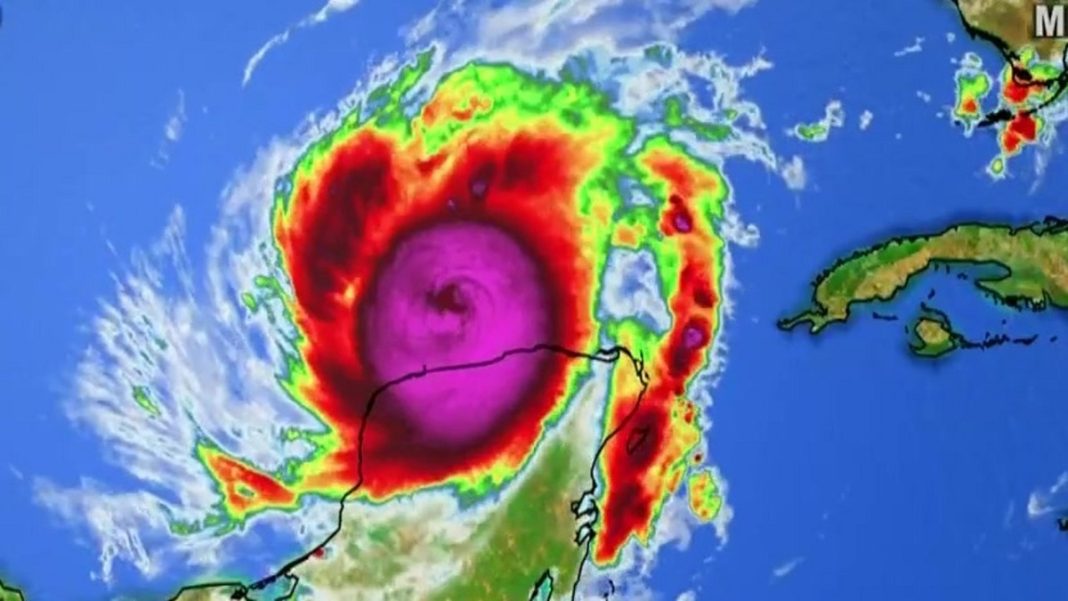As Hurricane Milton approached Florida, it cast a long shadow over the Tampa Bay region, a densely populated area of over 3.3 million residents. Despite a slight weakening to a Category 4 storm by early Tuesday, meteorologists cautioned that Milton still posed an “extremely serious threat” with winds reaching 145 mph and potential storm surges of up to 15 feet. The storm’s trajectory hinted at a once-in-a-century direct hit, raising alarms across the state.
The state of Florida was under a cloud of urgency, with almost its entire west coast issued hurricane or tropical storm warnings. Governor Ron DeSantis took to the airwaves, reassuring residents that evacuation options were available and that they didn’t need to flee hundreds of miles away. “You can evacuate tens of miles; you do not have to evacuate hundreds of miles away. You do have options,” he said, emphasizing the importance of being prepared without causing unnecessary panic.
Yet, not everyone was inclined to evacuate, as evidenced by residents like Martin Oakes and Ralph Douglas, who decided to “tough it out” in their homes. Their sentiments reflect a common attitude observed in prior storms—many individuals often weigh the risks against their personal circumstances and past experiences. Douglas voiced concern over the potential for gas shortages and road blockages if he were to evacuate, illustrating a real dilemma faced by many in hurricane-prone areas.
In the face of the impending storm, the state had mobilized an extensive response, deploying over 300 dump trucks to remove debris from Hurricane Helene, which had struck just 12 days prior. This proactive measure aimed to mitigate the risk of debris becoming dangerous projectiles during Milton’s assault. The importance of such preparations cannot be overstated; a study by the National Oceanic and Atmospheric Administration (NOAA) highlights that debris can significantly exacerbate the damage caused by hurricanes.
As dawn broke on Tuesday, the scene in Indian Rocks Beach was strikingly quiet, with sheriff’s deputies urging any remaining residents to evacuate immediately. The contrast to the typical hustle and bustle of the area underscored the gravity of the situation. The National Hurricane Center’s forecasts indicated that Milton would remain a dangerous hurricane while crossing the state, with rainfall totals projected to reach as high as 18 inches in some areas—a scenario that would likely lead to severe flooding.
Tampa Bay has not experienced a direct hit from a major hurricane since 1921, and the specter of Milton raised concerns among meteorologists and officials alike. John Cangialosi, a hurricane specialist, pointed out the demographic shifts in Florida, noting, “If you look at the population in Florida, there’s much more population across the central part of the state than there is in the Big Bend.” This demographic factor could amplify the storm’s impact significantly compared to past hurricanes.
In tandem with state efforts, federal support was mobilized. President Biden approved an emergency declaration for Florida, while FEMA Administrator Deanne Criswell urged residents to heed local officials’ warnings. “People don’t need to move far. They just need to move inland,” she stated, reinforcing the necessity of taking evacuation orders seriously.
The backdrop of recent history loomed large as well, especially in places like Fort Myers Beach, where the scars of Hurricane Ian were still fresh. The town, previously devastated by Ian’s 15-foot storm surge, was nearly deserted as residents scrambled to safeguard their properties. Construction supplies, remnants of recovery efforts, lined the streets, posing potential hazards in the event of high winds or flooding.
In the days leading up to Milton’s anticipated landfall, the urgency to prepare was palpable. Residents who previously rode out storms were now more attuned to the warnings, with traffic reports showing a significant exodus from vulnerable areas. Yet, as the storm loomed, the question remained: would the lessons learned from past hurricanes be enough to spur timely action, or would complacency lead to dire consequences?
As Milton approached, it became more than just a weather event; it was a reminder of nature’s unpredictability and the pressing need for preparedness. Whether through government action, community resilience, or individual choices, the impending hurricane was a catalyst for reflection on what it means to live in a region often at the mercy of the elements. The true test would be how well the state and its residents could weather this storm together, armed with lessons from the past and the resolve to face the future.


